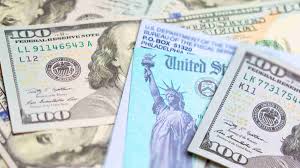In 2024, the IRS processed approximately 161.5 million tax returns, marking a slight increase of 0.9% compared to the previous year. While many taxpayers eagerly await their refunds, not all will receive one—around 103.2 million filers got refunds, leaving over 58 million without one or owing money to the IRS. For those expecting refunds, the speed of payment can depend on the method chosen. Here’s a breakdown of how taxpayers can maximize their refund experience.
Tax Refund Details
Of the taxpayers receiving refunds, a large majority, 93.5 million, opted for direct deposit, which is the quickest and most efficient method. In contrast, 9.7 million taxpayers still received paper checks, which tend to take longer to process and deliver.
Why Choose Direct Deposit?
The IRS strongly encourages taxpayers to choose direct deposit for several reasons:
- Speed: Direct deposit ensures the fastest delivery, especially when combined with electronic filing.
- Convenience: Your refund is automatically deposited into your bank account, so you don’t have to wait for a check.
- Reliability: Avoid delays or potential issues that can arise from paper checks being lost in the mail.
To set up direct deposit, you’ll need your bank’s routing number and your account number, which can typically be found in your online banking profile or by contacting your bank directly.
Alternatives for Unbanked Taxpayers
If you don’t have a bank account, there are several ways to set one up to receive your refund quickly:
- FDIC-Insured Bank Accounts: Open an account at any FDIC-insured bank to ensure your refund is deposited securely and promptly.
- Credit Union Accounts: Use the National Credit Union Locator Tool to find credit unions that may offer no-fee or low-fee accounts for easy access to your refund.
- Veterans Benefits Banking Program (VBBP): Veterans without bank accounts can access financial services through the VBBP, which offers tailored banking solutions for veterans.
- Prepaid Debit Cards: Many prepaid debit cards support direct deposit, provided they include a routing and account number.
- Mobile Apps: Some financial apps also offer direct deposit services, making it a modern alternative for managing funds.
Also Read – California SNAP- CalFresh December Payments: Up to $1,756 in Food Stamp Benefits
Direct Deposit vs. Paper Checks
Paper checks are considerably slower than direct deposits. By filing electronically and opting for direct deposit, taxpayers can receive their refunds much faster. The IRS recommends that unbanked individuals consider setting up bank accounts or choose other methods for direct deposit to avoid delays.
FAQs
How many taxpayers received refunds in 2024?
Approximately 103.2 million taxpayers received refunds.
How many received their refunds via direct deposit?
93.5 million taxpayers opted for direct deposit.
What’s the fastest way to get a tax refund?
File electronically and choose direct deposit for the quickest refund.
How can I set up direct deposit if I don’t have a bank account?
Visit an FDIC-insured bank, use a credit union, or explore other options like prepaid debit cards or mobile apps.
What options do veterans have for direct deposit?
Veterans can utilize the Veterans Benefits Banking Program (VBBP) for financial services and direct deposit access.
By filing electronically and selecting direct deposit, you can ensure the quickest possible access to your tax refund.




![Tyson Foods Plant [Photo: Food Manufacturing]](https://southarkansassun.com/wp-content/uploads/2023/08/iStock_1185520857__1_.5e441daa51cca-600x337.jpg)







![Silverado Senior Living Management Inc. [Photo: Los Angeles Times]](https://southarkansassun.com/wp-content/uploads/2023/10/download-6-4-600x337.jpg)

![China's Wuhan Institute of Virology [Photo: Nature]](https://southarkansassun.com/wp-content/uploads/2023/09/d41586-021-01529-3_19239608-600x337.jpg)
















